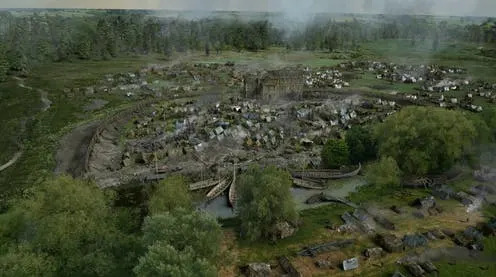
Artist’s impression of the viking camp established in 873 at Repton (Derbyshire, England).
Compost Creative, Author provided
Compost Creative, Author provided
For many years, archaeologists and historians have provided an increasingly informed insight into the dynamic world of the vikings, chipping away at the clichés of a crazed, capricious people preoccupied with beards and bloodshed. One particular approach to understanding viking activity has been to study the encampments they set up along the coasts and rivers of western Europe, allowing them to substitute their ships for a fixed, onshore position whenever cold, fatigue, hunger, or other conditions compelled them to.
Often called “winter camps” or longphuirt, more than 100 of these sites were witnessed across the Atlantic archipelago and European mainland during the ninth century alone, and their tangible remains have been uncovered in places like Repton and Torksey in England, and Woodstown in Ireland. Most recently, potential viking encampments have also been pointed to near Zutphen in the Netherlands, as well as the Coquet Valley in Northumbria.
Read the rest of this article...